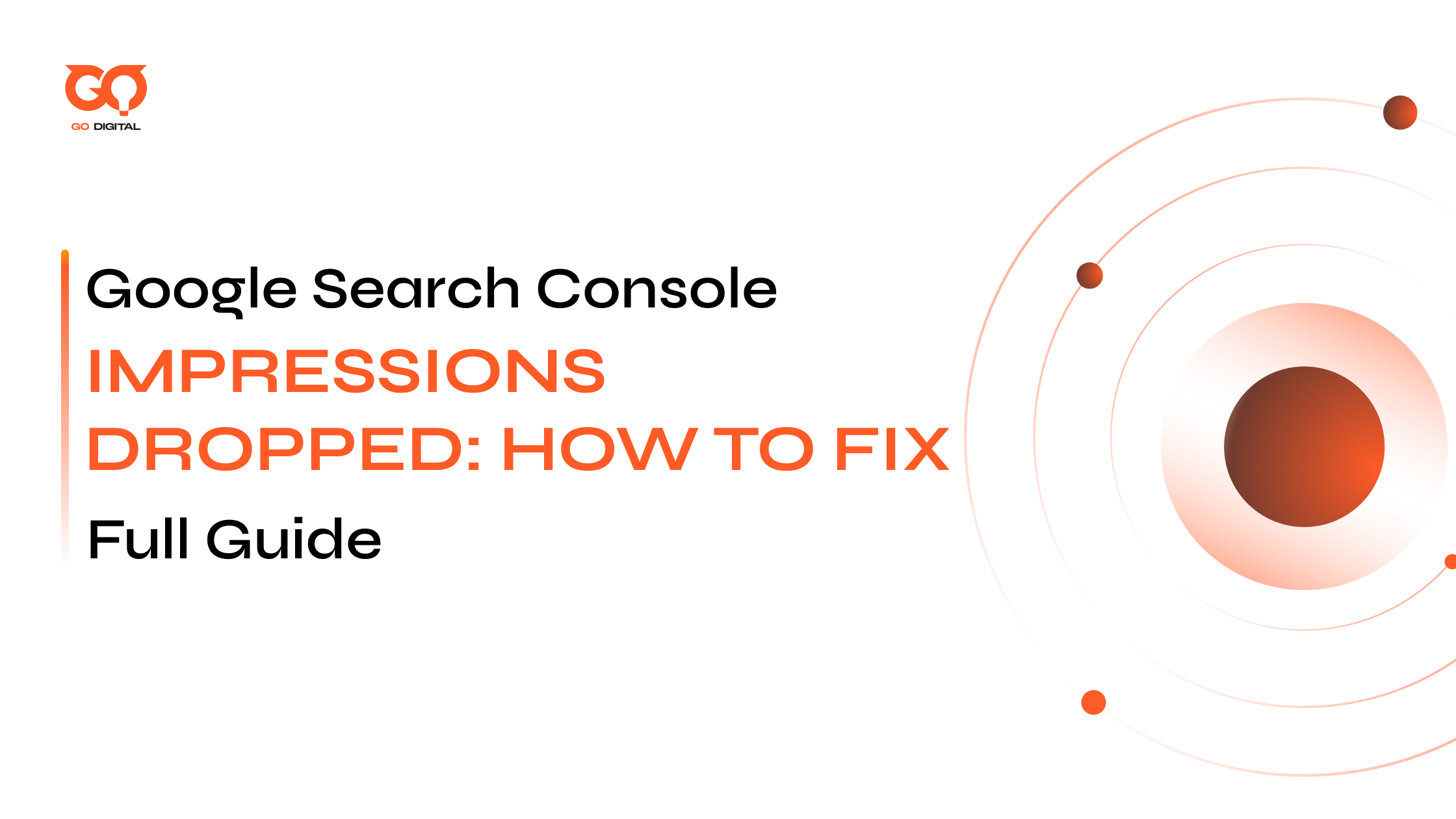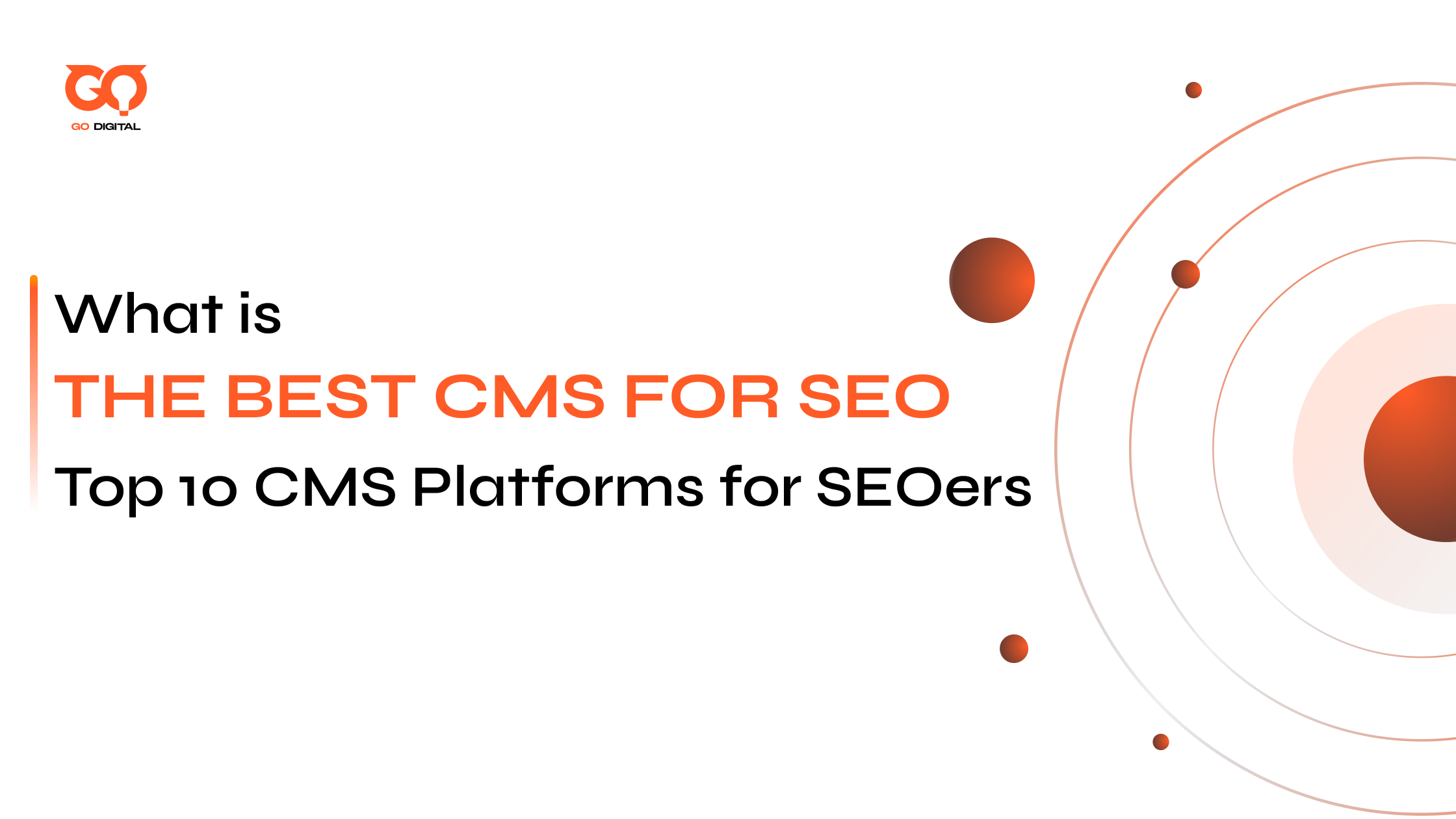
Google Search Console Impressions Dropped: How to Fix
Have your Google Search Console impressions dropped recently? If yes, you’re not alone—many site owners see these fluctuations. While it can feel alarming, it doesn’t always signal a major problem; more often, it reveals underlying search visibility issues—whether technical glitches, content gaps, or external shifts.
In this post, we’ll break down what a drop in impressions really means, examine the key reasons behind it, and guide you through how to assess the data and restore your search visibility.
Key takeaways:
|
What Are Google Search Console Impressions and Why Do They Matter?
In GSC, an impression is counted each time a user sees a link to your website in Google’s search results. They don’t need to click it; just viewing it counts. For example, if your URL appears in search results, even on page two, and the user’s browser loads or scrolls down far enough to see it, that’s an impression.
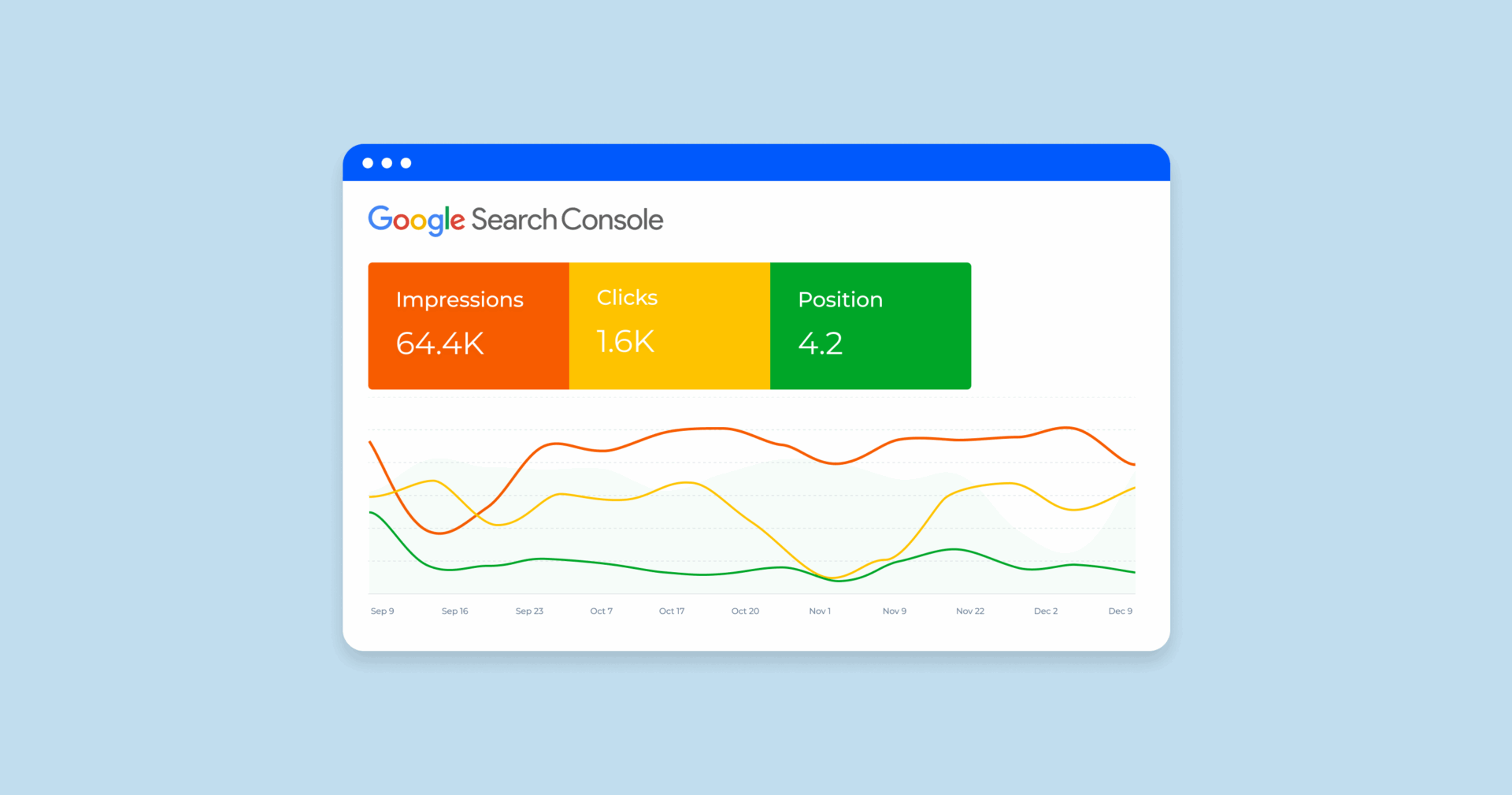
Impressions help measure content visibility before clicks or conversions
Understanding the link between impressions and clicks is key—impressions reflect visibility. When they rise, your site is reaching more users; when they fall, it could signal issues with rankings, indexing, or changes in search behavior. That’s why monitoring impressions is essential to any effective SEO strategy
6 Common Causes of Impressions Drop in Google Search Console
A drop in impressions can stem from various factors, ranging from technical glitches to evolving search behavior. Let’s explore 6 of the most common causes:
- Google Algorithm Updates
- Technical Issues: Crawling, Indexing, Canonical Tags, and Sitemaps
- Indexing and De-Indexing Problems
- Seasonal or Market Search Trend Changes
- Increased Competition on SERPs
- Impact of New SERP Features
1. Google Algorithm Updates
Google rolls out thousands of algorithm changes every year, from small updates to major core updates that reshape search rankings. For example, the November 2024 core update, the March 2025 update, or the AI Overview rollout can significantly affect rankings.
If your content no longer meets Google’s evolving ranking signals (e.g., helpfulness, authority, topical relevance), your pages may decrease in SEO traffic.
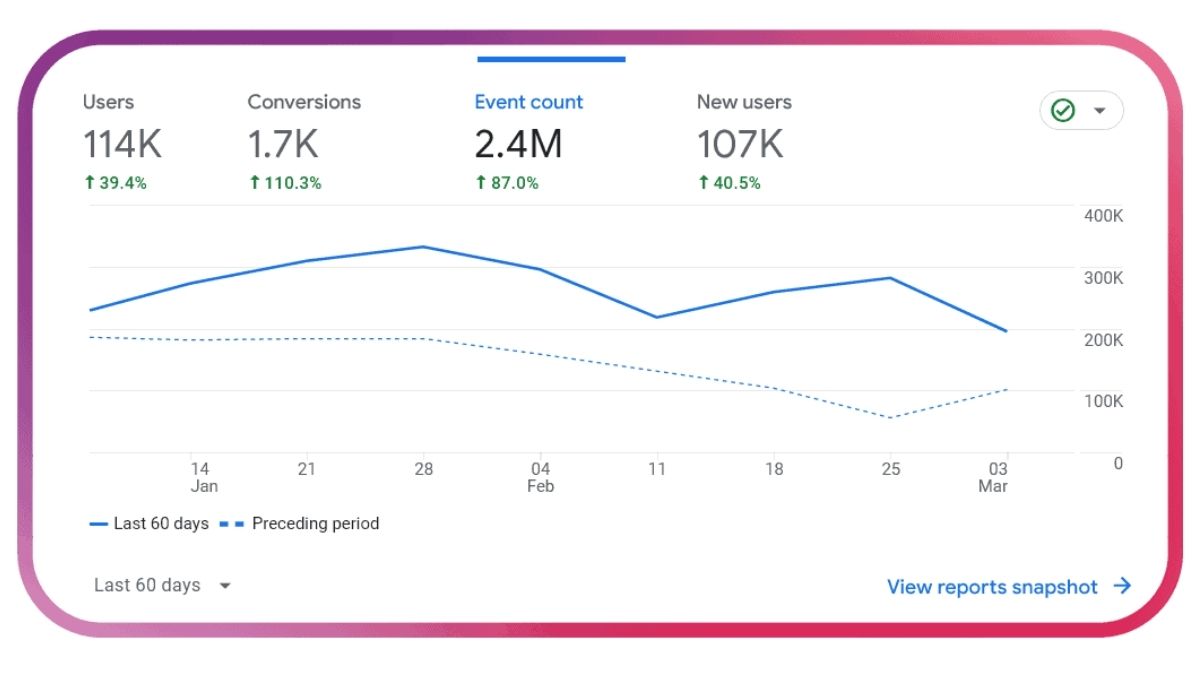
The impact of algorithm updates on impressions
Tips:
- Keep an eye on industry news and Google’s Search Status Dashboard to spot recent algorithm updates.
- If your impressions drop aligns with an update, review affected pages and audit your content for quality, relevance, and alignment with Google’s latest ranking signals.
Want to be ahead of everyone? Check out our article: When Is the Next Google Update in 2025? What to Expect?
2. Technical Issues: Crawling, Indexing, Canonical Tags, and Sitemaps
Technical issues are another common culprit behind the decrease in SEO traffic. Google must be able to crawl and index your pages to display them in SERPs. If something blocks that process, your impressions will nosedive. Let’s check:
- Broken internal links or redirect loops.
- Incorrect canonical tags are pointing to the wrong version of a page.
- Robots.txt or meta noindex directives are unintentionally blocking important pages.
- Outdated or incomplete XML sitemaps that don’t reflect your current site structure.

Google crawls and indexes content’s process
3. Indexing and De-Indexing Problems
If your pages are no longer indexed, they can’t be served in search results, and thus, no impressions occur. Causes may include:
- Manual actions or penalties.
- Sudden deletion or URL restructuring.
- Duplicate content, leading Google to drop lower-performing versions.
To check it, let’s run a site:yourdomain.com search to see which of your pages are still indexed and use GSC’s Index Coverage and URL Inspection tools to troubleshoot.
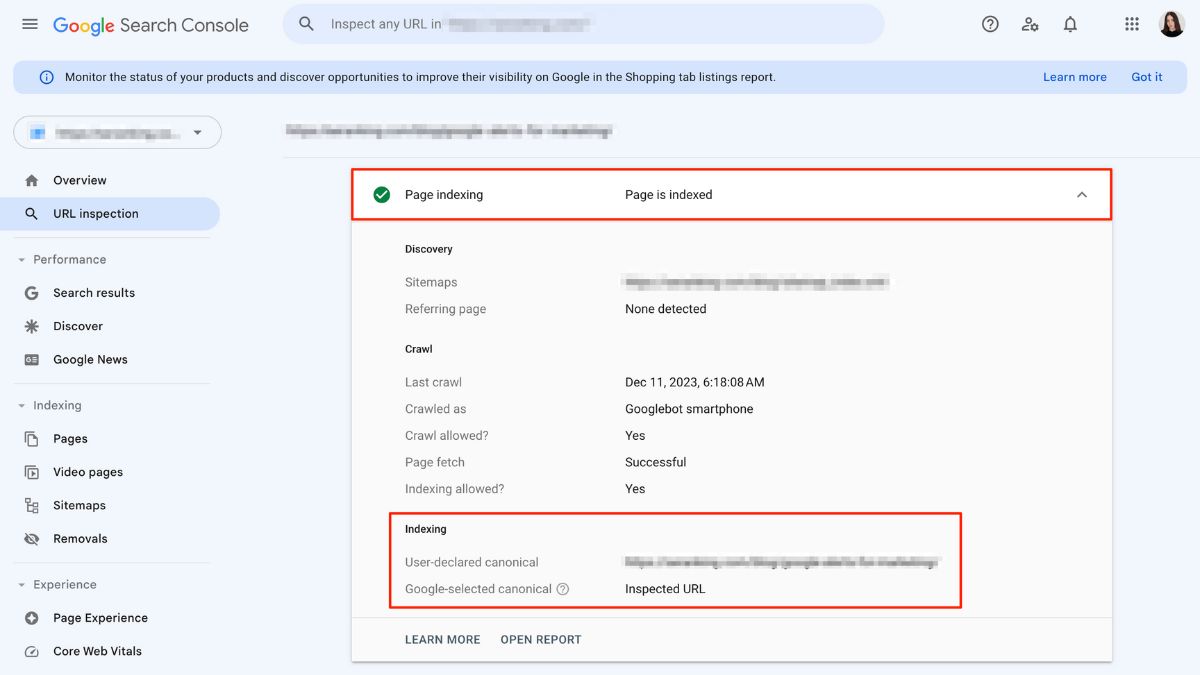
Common cause of Google search console impressions dropped
4. Seasonal or Market Search Trend Changes
Sometimes the cause isn’t your site at all—it’s user behavior. For instance, a website selling ski gear may naturally experience fewer impressions in the summer months. Similarly, global events, economic shifts, or even viral trends can cause search interest to fluctuate dramatically.
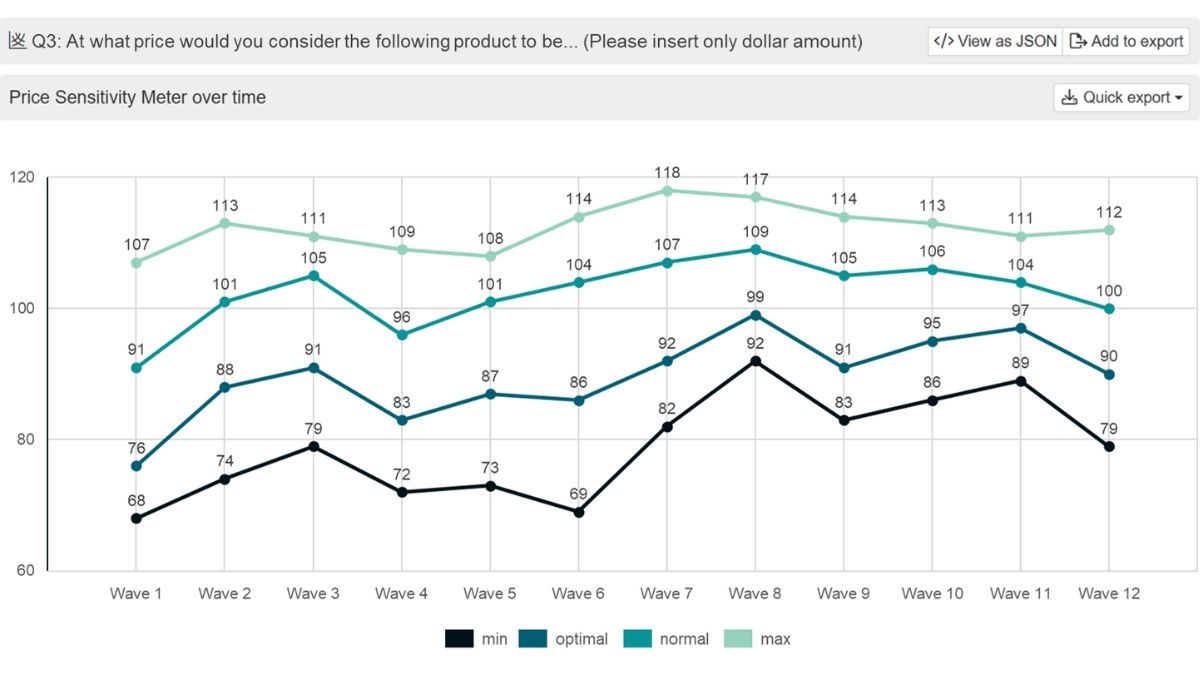
Understanding your niche and external search trends helps you anticipate impression changes
To verify if this is the case:
- Compare year-over-year data in GSC or Google Trends.
- Analyze keyword seasonality using tools like Ahrefs or Semrush.
5. Increased Competition on SERPs
New competitors in your niche might use smart SEO tactics, pushing your website lower in search results, even off the first page for keywords you used to rank high for. This is especially common in fast-growing or saturated niches.
Signs include:
- Rankings dropping from position 3 to 10+.
- Competitors outranking you for your top keywords.
- New content or domains appearing in featured snippets, image packs, or videos.

If competitors boost content quality, authority, or engagement, your impressions may drop
6. Impact of New SERP Features
The introduction of new SERP features can significantly affect how users interact with search results. Google’s SERP layout is constantly evolving with features like:
- AI Overviews (formerly SGE).
- People Also Ask (PAA) boxes.
- Image carousels, video results, and knowledge panels.
These elements can push organic listings further down, even if you’re still ranking technically well. Fewer users scroll past these attention-grabbing boxes, leading to fewer impressions.

New SERP features is one of the key reasons why Google search console impressions dropped
For example, if an AI overview provides concise answers at the top of the SERP, users may not scroll down to see traditional search results. Similarly, PAA sections may provide users with immediate answers, reducing the need to visit individual websites.
How to Analyze an Impression Drop in Google Search Console
After noticing your Google Search Console impressions dropped, it’s important to dig into the data to find out why. Here’s how to start analyzing the metrics to identify the cause and plan an effective fix:
1. Use the Performance Report in GSC
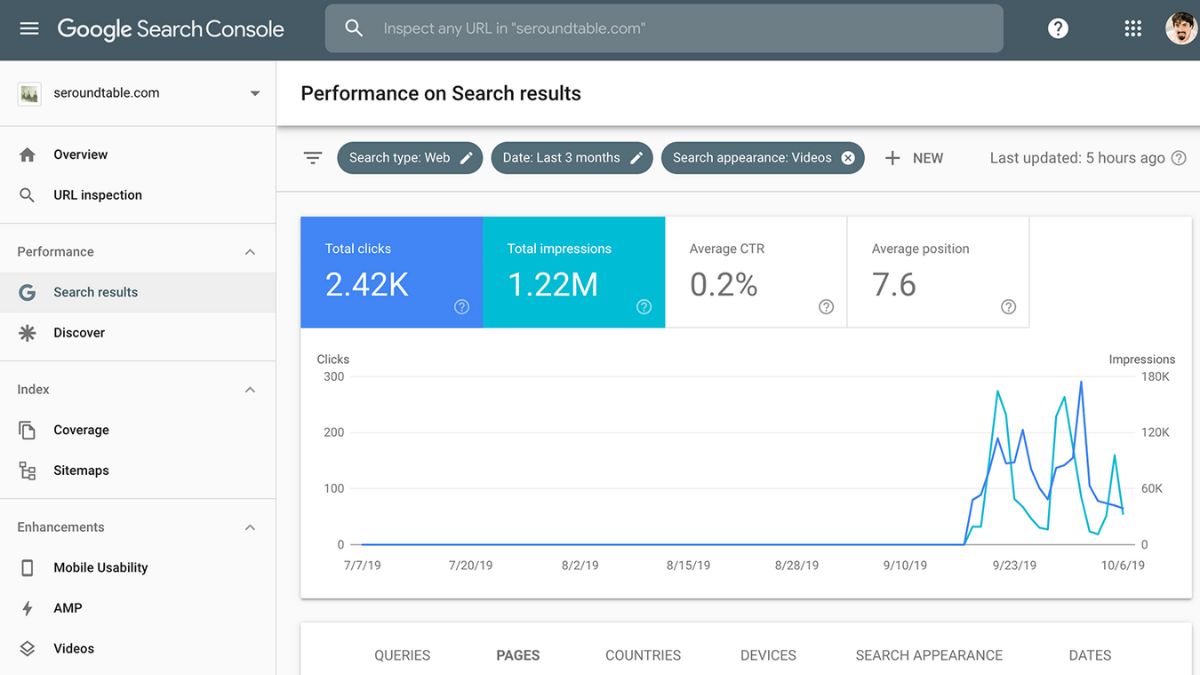
GSC Performance Report with date comparison enabled
Start with the Performance report in Google Search Console. This section provides a detailed overview of impressions, clicks, CTR, and average position for your site.
- Set the date range to include both before and after the drop.
- Focus on total impressions and check if the decline is sudden or gradual.
- Enable compare mode to visualize changes over time and filter by metrics like clicks or queries.
2. Segment by Page, Query, Device, and Country
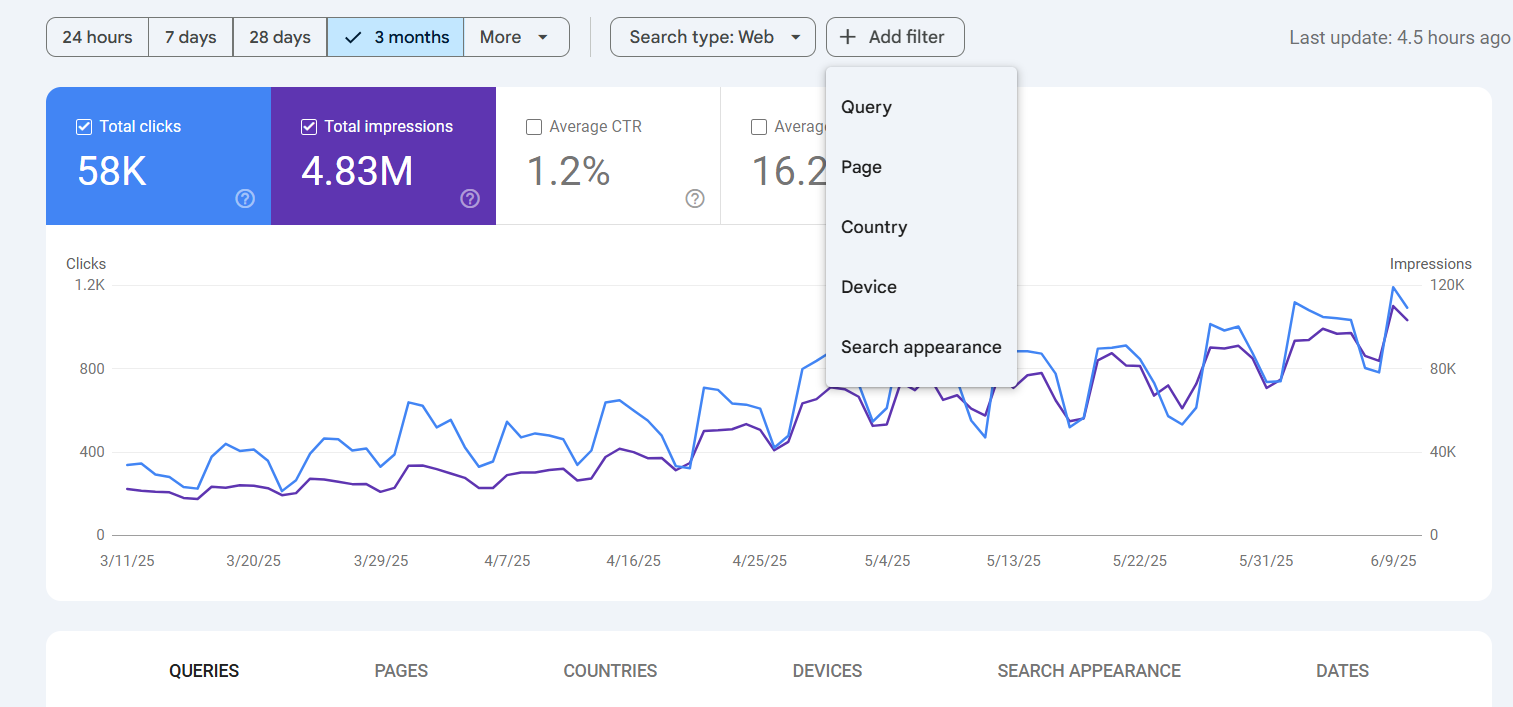
Segment by Page, Query, Device, and Country
To uncover more specific issues, segment your data:
- By Page: Spot which URLs lost the most visibility.
- By Query: Which search terms dropped in impressions? This helps identify if you’ve lost visibility for high-volume or branded queries.
- By Device: Drops on mobile but not desktop may signal usability or speed issues.
- By Country: Drops in specific regions may suggest localized issues (e.g., hreflang errors, slow CDN performance).
3. Compare Data Before and After the Drop
Use the compare feature to analyze periods before and after the impressions drop (e.g., “Last 28 days vs. previous 28 days”). Look for patterns such as:
- Sharp declines on specific dates
- Drops across all pages or just a few
- Changes in user behavior or CTR
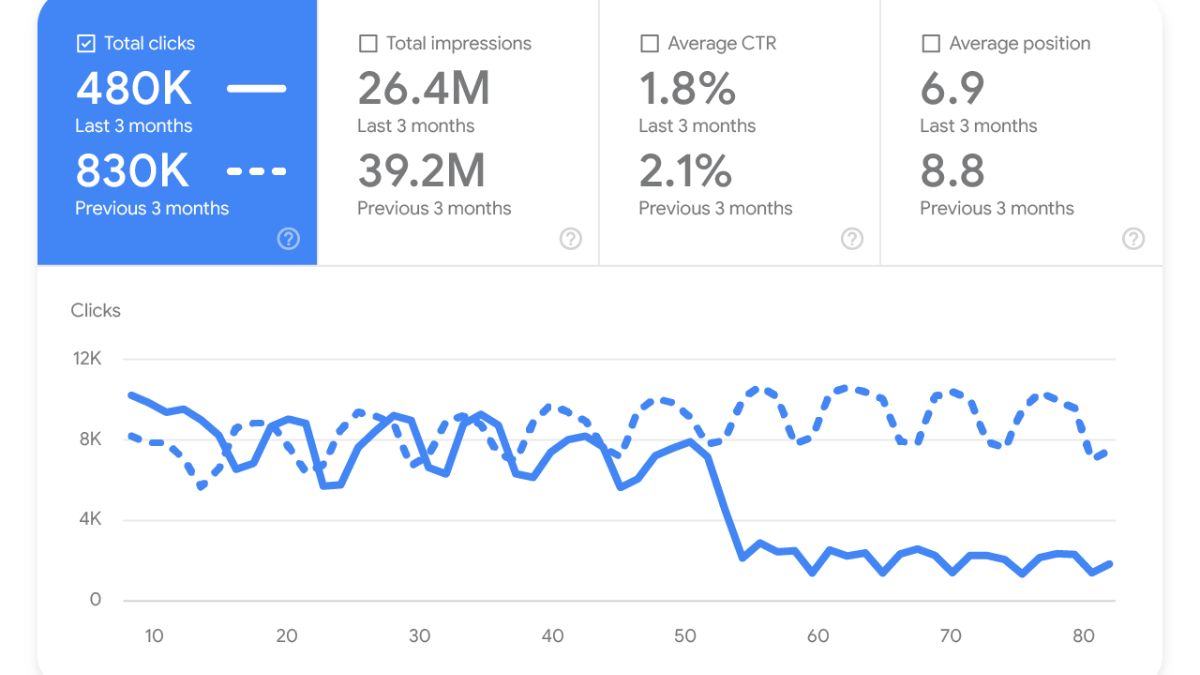
This comparison helps you correlate the drop with known external factors like Google updates,..
4. Identify Patterns & Correlate with Algorithm Updates
If your impression drop aligns with a known Google Core Update, that may be the cause. Use tools like:
- Google Search Status Dashboard: to see official updates from Google.
- MozCast, SEMrush Sensor, or Rank Ranger for SERP volatility: to track SERP volatility and detect major ranking shifts across the web.
Then, review your affected pages to see if they meet Google’s latest quality guidelines (e.g., helpful content, EEAT, etc.).
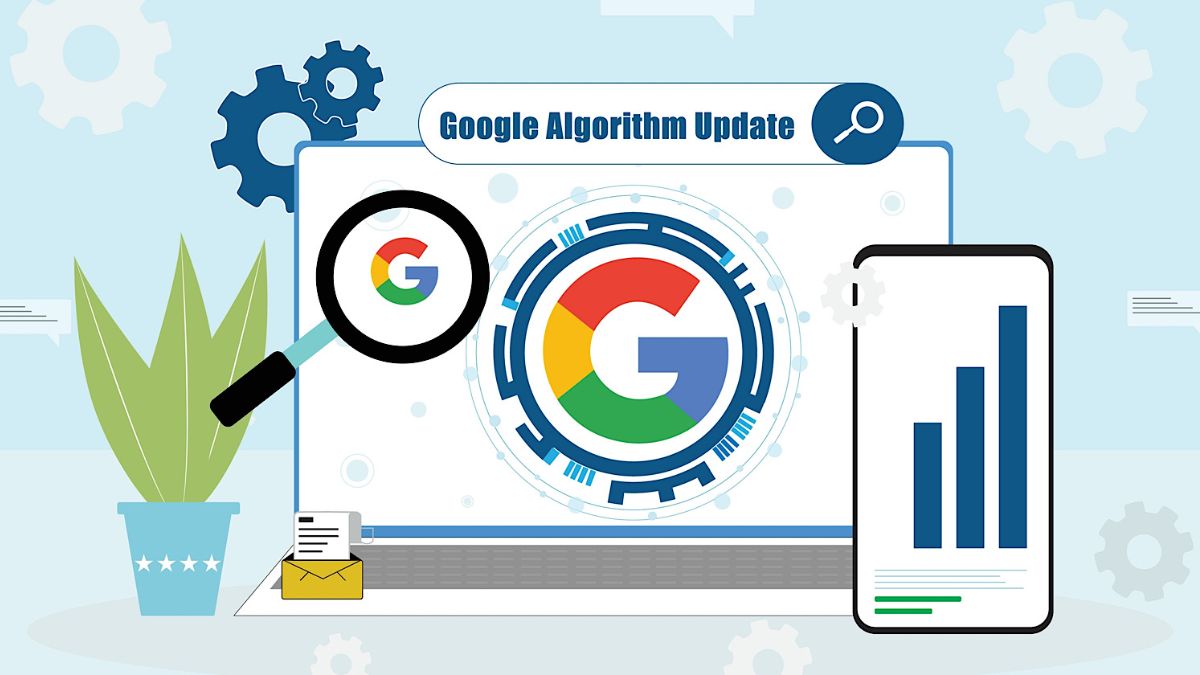
Evaluate your pages based on Google’s latest quality standards
5. Check for Indexing and Canonical Issues
Finally, verify whether technical issues are preventing your pages from being indexed or displayed correctly:
- Use the URL Inspection Tool in GSC to check individual pages for indexing status, canonical tags, and crawl issues.
- Review the Index Coverage report for crawl errors or warnings (e.g., “Crawled – currently not indexed”, “Duplicate, Google chose different canonical”, etc.).
- Make sure important pages haven’t been accidentally marked as noindex or excluded via robots.txt.

Check for Indexing and Canonical Issues
| You might be interested in: How to Tell If Your SEO Company Is Working? 7 Clear Signs |
What to Do When Your Site Experiences an Impression Drop
When faced with a Google Search Console impressions dropped, swift action is required to rectify the situation. Here are some steps to take in response to the drop.
1. Check for and Fix Crawl and Indexing Errors
Your pages can’t appear in search results if they aren’t properly crawled or indexed. Start with the basics:
- Submit a new sitemap in GSC if pages were recently updated or added.
- Remove accidental noindex tags or disallow rules in robots.txt.
- Fix broken internal links and update outdated redirects.
- Use the URL Inspection Tool to manually request indexing for crucial pages.
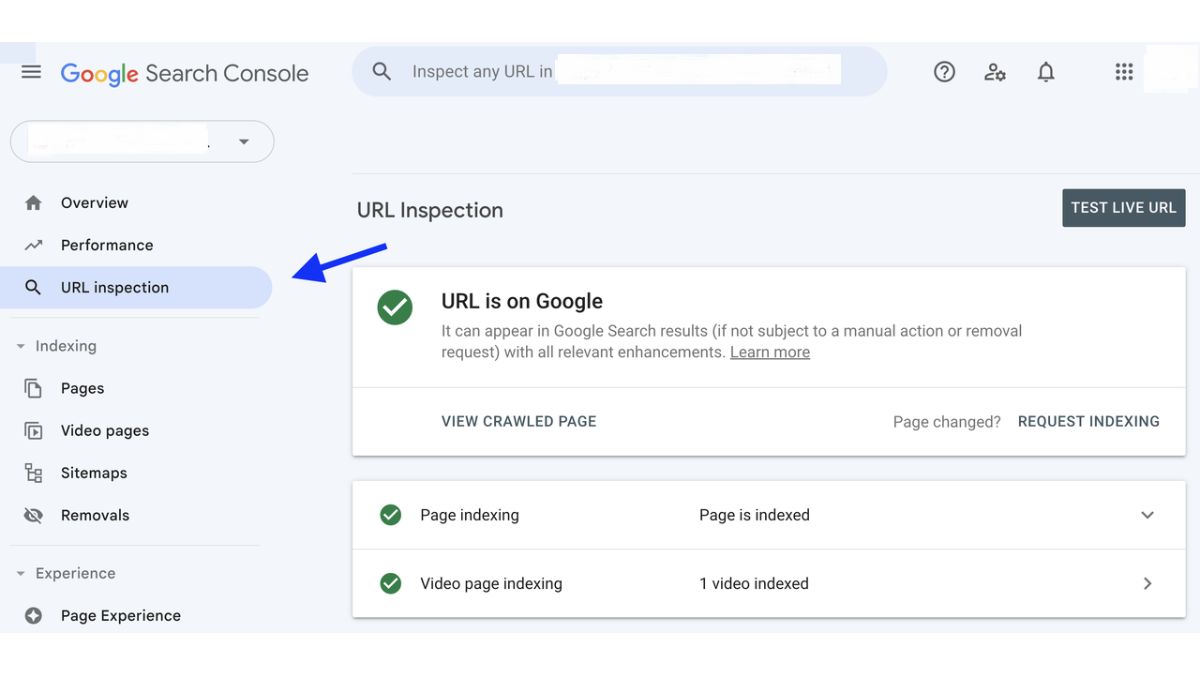
Resubmit updated pages for indexing once issues are resolved
2. Optimize Your Content According to GSC Recommendations
Google Search Console provides invaluable recommendations for improving your content and overall site performance. Review the ‘Enhancements’ section to see how your site can better align with Google’s guidelines.
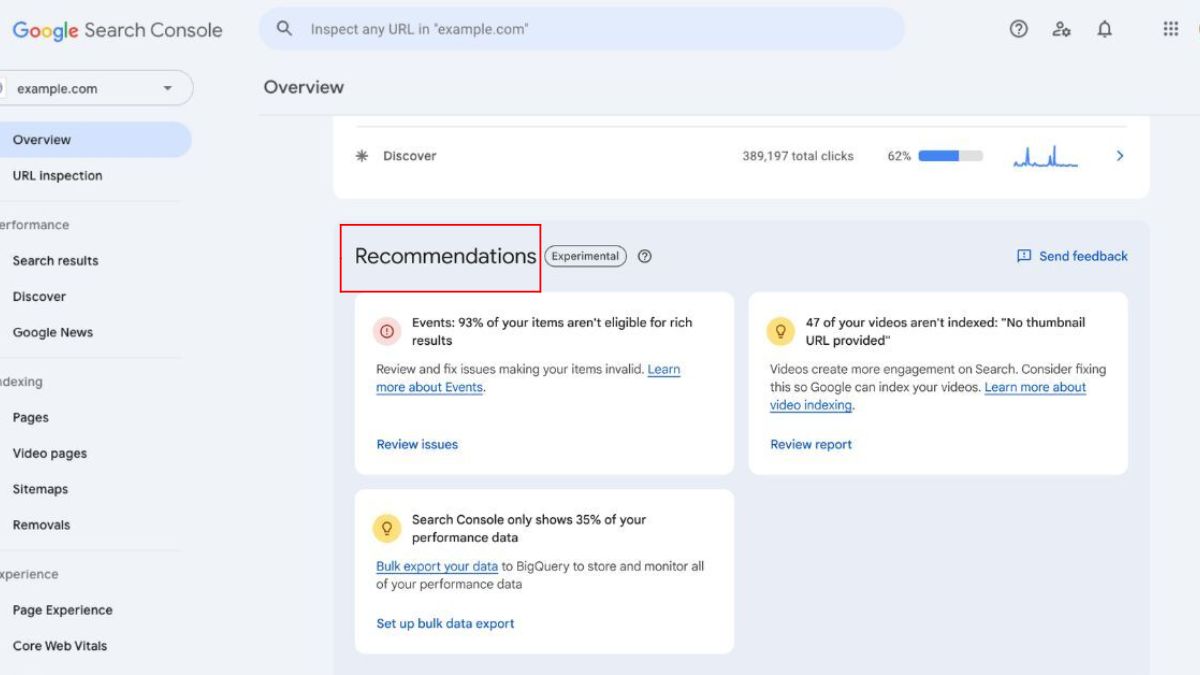
Content should be updated with relevance, freshness, and search intent in mind
Focus on optimizing aspects such as mobile usability, core web vitals, and structured data markup. Implementing these optimizations can enhance user experience and signal to Google that your site meets quality standards.
3. Improve Meta Titles and Descriptions to Boost CTR
As part of your strategy to regain impressions, revisiting your meta titles and descriptions is crucial. A consistently low CTR may eventually lead Google to downgrade your rankings.
Tips for boosting CTR:
- Include power words and emotional triggers in your titles.
- Use numbers or questions to spark curiosity.
- Ensure meta descriptions are clear, compelling, and match search intent.
- A/B test variations and monitor performance over time.
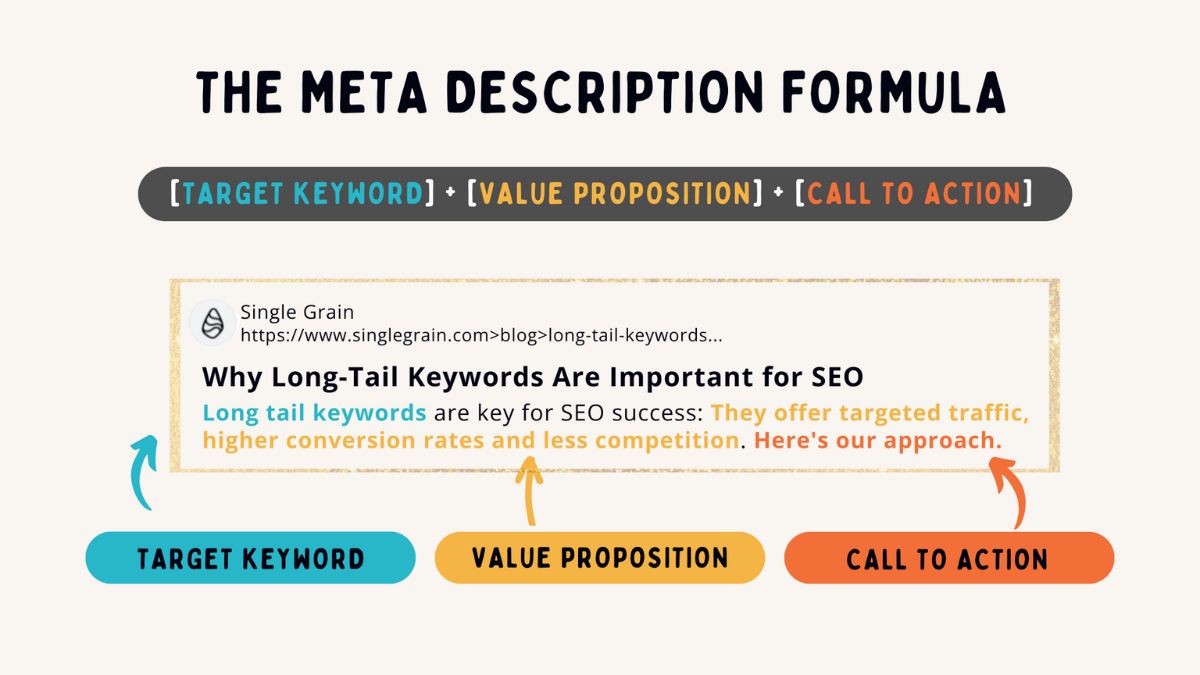
Include target keywords early in your title for better relevance
4. Optimize for Different Search Intents
Understanding user intent is key to improving your content strategy
Search intent falls into categories like:
- Informational: “What is…”, “How to…”
- Navigational: Brand or site-specific queries.
- Commercial: “Review”,.. best…
- Transactional: “Buy”, “Price”, “Deals”
Analyze the search intents associated with your target keywords. Create content that effectively addresses these intents, such as informative articles, product reviews, buying guides, or FAQs. This approach can result in higher engagement rates and ultimately lead to a recovery in impressions.
5. Analyze and Adjust Based on Keyword Length
The length of your targeted keywords can significantly impact your chances of being discovered in search results:
- Short-tail: High volume, high competition, volatile rankings.
- Long-tail: Lower volume, higher conversion potential, more stable.
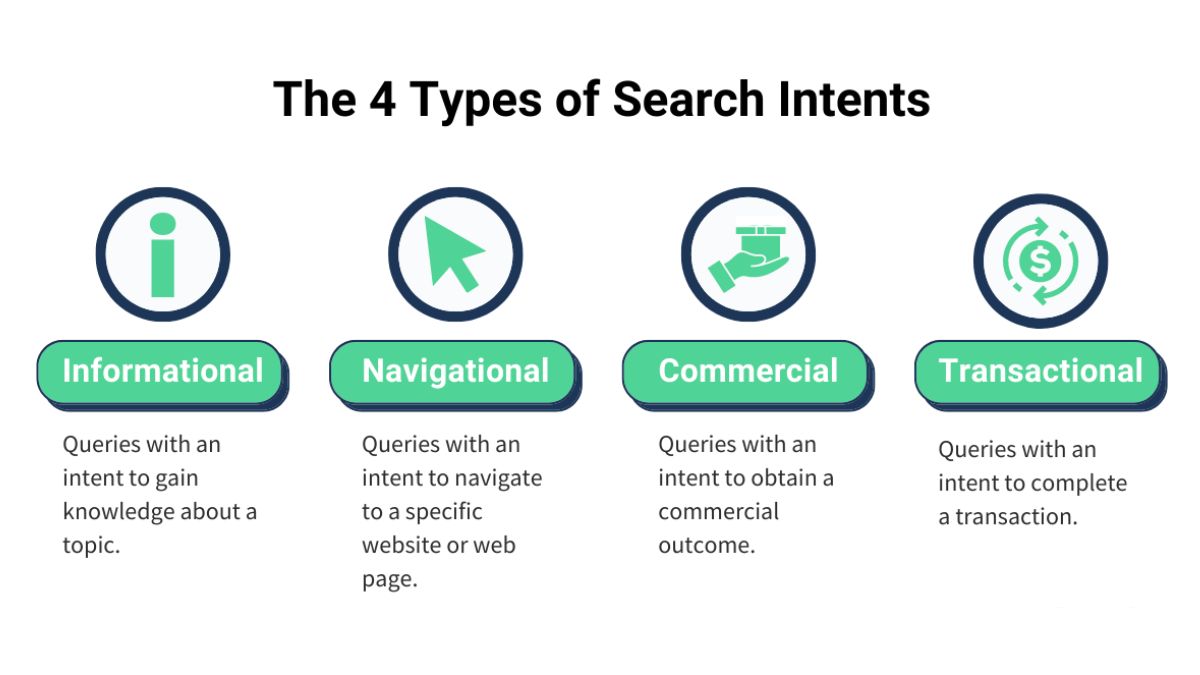
Analyze and Adjust Based on Keyword Length
If your impressions dropped due to over-reliance on short-tail keywords, diversify your strategy:
- Use tools like AnswerThePublic, Semrush, or Google’s “People Also Ask” for long-tail inspiration.
- Structure your content to target clusters of semantically related long-tail terms.
- Monitor performance by filtering queries by length or phrase match in GSC.
Final Thoughts
A Google Search Console impressions dropped is a signal, not a setback. It’s a chance to refine your SEO, fix issues, and realign with user intent for long-term success.
If you’re ready to turn that drop into growth, Golden Owl Digital is here to help. We go beyond monitoring metrics—we dive deep into your site, identify what’s holding you back, and build solutions that drive real, lasting performance. Let’s take your SEO further—partner with us to make every impression count.


